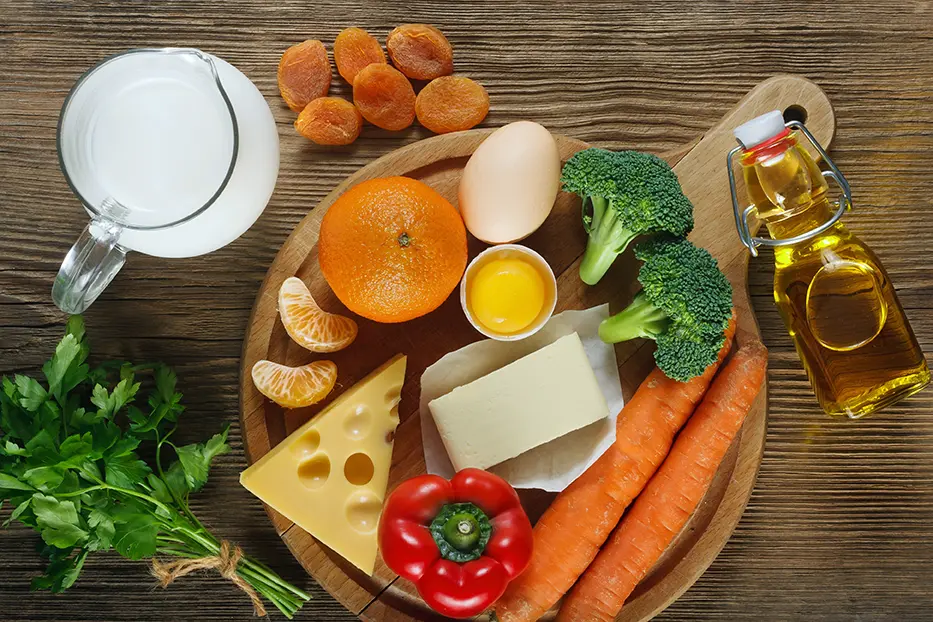What is vitamin A?
Vitamin A is a fat-soluble vitamin and is essential for eye health, the immune system and for all growth, development and regeneration processes.
Vitamin A has an exciting function in the cell nucleus during gene activation. The vitamin acts as a kind of switch that can turn certain genes on or off.
Vitamin A also has an effect on the genetic material itself. It protects the structure and integrity of DNA and can prevent damage to genetic information.
Vitamin A is available in two forms. Firstly, as a vitamin or retinol, which is mainly found in animal foods such as eggs, meat, fish, offal, butter and dairy products. The other is beta-carotene, which is mainly found in plant-based foods such as carrots, spinach and sweet potatoes. The body can convert beta-carotene into vitamin A as required. This mechanism is very practical as we can easily store beta-carotene and do not run the risk of ingesting too much vitamin A.
An overdose of vitamin A from food alone is hardly possible, but caution is advised (especially with excessive consumption of offal). Vitamin A can accumulate in the organs and put a strain on the liver in particular.
Examples of foods rich in vitamin A
| Food | Amount of vitamin A per 100g food |
|---|---|
| eggs | 0.28 mg |
| liver pâté | 9.65 mg |
| Tuna | 0.45 mg |
| Milk and dairy products | 0.1 to 0.4 mg |
| butter | 0.65 mg |
A lack of vitamin A can in turn lead to night blindness, loss of vision, reddening of the skin and an increased susceptibility to infections.
It is interesting to note that vitamin A levels in the body can be affected by genetic variations. Such variations can influence the effect of vitamin A, for example by altering the metabolism, absorption and signaling pathways of the vitamin.
Vitamin A can be absorbed naturally particularly well via its precursor, beta-carotene.
This is found in numerous plant-based foods and is converted into vitamin A as required. In this way, an overdose is virtually impossible and the requirement is covered throughout.
Examples of foods rich in beta-carotene
| Food | Amount of vitamin A per 100g food |
|---|---|
| eggs | 0.28 mg |
| liver pâté | 9.65 mg |
| Tuna | 0.45 mg |
| Milk and dairy products | 0.1 to 0.4 mg |
| butter | 0.65 mg |

![[Report Bild]](/static/reportImages/vitamin-a2.webp)